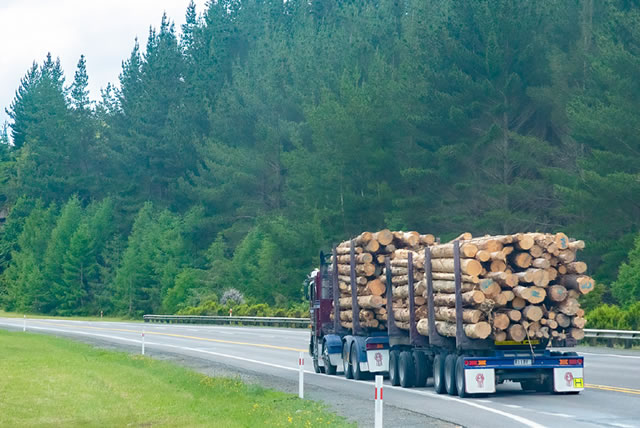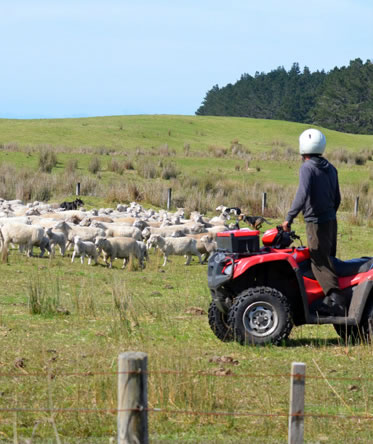 Welcome to the Autumn edition of Rural eSpeaking, our first issue for 2022. We hope you find the articles both interesting and useful.
Welcome to the Autumn edition of Rural eSpeaking, our first issue for 2022. We hope you find the articles both interesting and useful.
If you would like to talk further about any of the topics we have covered in this edition, or indeed on any other legal matter, please don’t hesitate to contact us.
Download Rural eSpeaking, Autumn 2022 (PDF)
He Waka Eke Noa
Options out of the ETS for the primary sector
He Waka Eke Noa (HWEN) is a partnership established to reduce the emissions generated by the primary sector. It works to equip farmers to measure, manage and reduce on-farm agriculture greenhouse emissions and to provide sustainable farming practices for future generations.
More importantly, HWEN is developing a suitable emissions pricing scheme as the entire primary sector is not currently covered by the Emissions Trading Scheme (ETS). The government’s approval to this industry-led approach, however, comes with a large caveat – the ETS is the backstop for pricing agricultural emissions if HWEN does not deliver an effective and workable alternative.
HWEN has put forward two options to the ETS:
- A farm-level levy: this will calculate emissions using farm-specific data and the farm will pay a price for its net emissions, or
- A processer-hybrid levy: this will calculate emissions at the meat, milk, and fertiliser processor level, based on the quantity of produce received from farms or, the amount of product sold to farms. It will be paid at a processor level. This levy is likely be charged through to the farmer based on the quantity of product processed or supplied.
These options went out for public consultation earlier this year; HWEN will provide its recommendations to the government in late May.
These options aim to provide farmers with a practical and credible emissions pricing framework enabling them to control how their farm is operated. Crucially, the alternative mechanisms delink the methane price from the carbon price and give greater recognition of the sequestration on a farm, that is, a split gas approach.
Both the farm level levy and the processerhybrid level acknowledge on-farm sequestration. For example, it would recognise native regeneration, riparian planting, shelter belts and other non-ETS eligible tree lots. This would be a significant win for many farmers who have invested heavily in improving the ecology and wellbeing of their land over the last few years.
What if either option is rejected?
If these two options are rejected, the sector will be subject to the ETS and the split gas approach will not be available; this means that the methane price will be linked to a rapidly increasing carbon price.
While agricultural emissions would be calculated at a processor level initially to create a ‘financial incentive’ for farmers to reduce emissions, it is likely that this would be passed on to farms based on the quantity of produce processed or product purchased. There is no doubt that costs for farmers would continue to increase annually, together with the ever-growing carbon price, despite continued work to reduce emissions.
‘Know your number’
Another milestone for HWEN is to ensure that all farmers and growers in New Zealand will know the annual methane and nitrous oxide emissions for their farms by December 2022. This has been dubbed ‘know your number’ by many in the primary sector. By 2025, each farm must have a written plan in place to measure and manage these emissions.
HWEN has defined a ‘farm’ as any farm over 80 hectares, or a dairy farm with a milk supply number or a cattle feedlot as defined in the National Environmental Standard for Freshwater. HWEN is supporting and assisting farmers in this process of knowing their numbers. While this space is still evolving and subject to change, the sooner farmers determine their numbers, the sooner they can understand where the emissions are being generated, and what actions may be taken to manage, mitigate or reduce them on farm.
Looking ahead
Regardless of the outcome that HWEN generates, the ETS and New Zealand’s international obligations create a need for better integration between forestry, emissions and the farming landscape. Farmers need to know their numbers so they can begin leveraging opportunities, and ensure they are in a good position for meeting legislative requirements.
To know more about HWEN and how it is working with the primary sector, click here. For advice relating directly to your farm or forestry situation, please don’t hesitate to contact us.
Forestry update

Challenges ahead
Forestry is attracting a great deal of interest and opportunity right now. This rapidly growing area faces challenges in terms of public opinion, regulation and general understanding. With all that is going on, where does this leave the agricultural sector in terms of sequestering carbon and the Emissions Trading Scheme (ETS)? We update you on some current issues.
‘Forest land’ and the farm
Forestry is a big player in sequestering carbon, however, not all forestry on a property can be registered in the ETS. The ETS defines ‘forest land’ as an area that is at least one hectare in size and has (or will have) tree crown cover of more than 30% in each hectare of forest species, at least 5m in height at maturity and an average width of at least 30m.
This set of rules restricts the parameters of registerable areas for carbon sequestration and, in particular, discounts some current developments and areas on farms. The scheme, for example, rules out smaller areas of riparian planting that many farmers have invested in to improve the ecology and environment on their land. However, if He Waka Eke Noa achieves its alternative emissions goal, this could change and, while these areas would not generate the same economic gain as ‘forest land’ under the ETS, they could create reward for existing on-farm sequestration.
Carbon accounting
Carbon accounting is the method by which an ETS participant calculates and reports changes in the carbon stored in a forest. To determine how many units a participant is entitled to earn (or must surrender), an emissions return must be completed and filed with the Ministry for Primary Industries. An emissions return must be made at least once during an emission return period; the current period runs from 1 January 2018 to 31 December 2022.
The 2023 ‘rush’
 If an eligible area is ETS-registered before the end of the current emission period (see above), significant returns could be leveraged by a participant claiming carbon units back to the start of the return period – 1 January 2018. This opportunity will, however, lapse by the end of 2022 when the next emissions period begins, thus creating an incentive (or ‘rush’) for landowners to consider the ETS in a more serious light in order to reap this financial reward.
If an eligible area is ETS-registered before the end of the current emission period (see above), significant returns could be leveraged by a participant claiming carbon units back to the start of the return period – 1 January 2018. This opportunity will, however, lapse by the end of 2022 when the next emissions period begins, thus creating an incentive (or ‘rush’) for landowners to consider the ETS in a more serious light in order to reap this financial reward.
2023 also introduces a change to carbon accounting. All post-1989 forests currently registered in the ETS use the stock change accounting method for carbon units and will continue to do so until 2023, at which point a landowner can decide whether to move to averaging accounting or remain in stock change accounting. From 1 January 2023, however, if a post-1989 forest is registered in the ETS the participant can only use the averaging accounting method unless the forest land is registered in the permanent forest category. The permanent forest category (see below) will continue to use the stock change accounting method despite this change.
Stock change accounting: as a forest grows it stores carbon and the participant earns units; however, if the carbon stock decreases then carbon units must be surrendered, that is, harvested. In other words, stock change accounting focuses on short-term increases and decreases in carbon storage in a forest.
Averaging accounting: the participant will earn units for the first rotation growth, until the forest reaches its ‘average age.’ Averaging accounting means that if an area is replanted within a reasonable time period, the landowner is entitled to keep harvesting and not surrender credits. While a participant can earn more carbon units under stock change accounting compared with average accounting, a participant will earn fewer ‘low risk’ units under stock change accounting. Low risk units are less likely to need to be repaid or surrendered.
Permanent forest category
2023 will bring about an additional category in the ETS called the ‘permanent post-1989 forest’; it replaces the current ‘permanent forest sink initiative.’
The new category is for forests that will not be clear-felled for at least 50 years. This option has generated much interest as an attractive investment opportunity for forestry owners and, more particularly, landowners seeking to turn farmland into economic gain. With the carbon price at upwards of $80/tonne, it is unsurprising the permanent forest category, and ETS generally, is pushing many farmers to consider forestry as a more viable practice in the future.
But is this set to change with the government’s recent proposal?
Proposal to exclude exotics
Under the current rules, a permanent forest category allows both exotic and indigenous forests to be registered in the ETS and earn New Zealand units (NZUs). The government has now, however, proposed excluding exotic species (such as pinus radiata) from the permanent forest category in a bid to better manage carbon farming in New Zealand.
The government’s proposed change (click here) has been generated from significant feedback and concern from scientists, primary industry and community groups, and local government with the increased rate of planting of exotic carbon forests on productive farmland.
Carbon farming is a hot topic not only in the rural sector, but also in environmental circles. Hopefully, the government’s proposal is the first step to a more strategic and managed process for the ETS in New Zealand.
In an ideal world we will have balanced opportunities for farmers to harness an income stream from their less productive land, while cultivating more valuable and sustainable areas of farmland for food production.
Over the fence

New minimum wage
From 1 April 2022, the minimum wage increased from $20.00 to $21.20/hour. If you haven’t already, you should review your employees’ pay rates to ensure you are compliant with the new minimum wage. For employees on a wage, this is a straightforward process as you only need to ensure that your employees’ wages are at least $21.20/hour. This is not the case for all employees, however, including those on a salary, as it makes it more difficult to calculate if their current pay rate is sufficient when they work overtime.
During busy times, such as the harvest and calving, salaried employees often work hours over and above their regular contract hours. You should check the pay of these employees every pay period to ensure their pay divided by the actual hours they worked meets minimum wage requirements. If not, your employee’s pay must be topped up to at least the minimum wage, regardless of whether any term in their employment agreement says otherwise.
Failing to keep accurate time records could lead to a penalty under the Employment Relations Act 2000 or Holidays Act 2003. You should also take this opportunity to ensure your time recording systems are accurate.
Vaccine mandate ends: how this will affect the rural sector
People employed in education, police, defence and hospitality are no longer required to be vaccinated to carry out their work. Employees in the health, aged care, corrections and border sectors, however, must still comply with vaccine mandates. Any terminations based on vaccination status made before these mandates were dropped are not unlawful, nor are there requirements to reinstate these past employees.
The rural sector is not directly impacted by these mandate changes. However, with many businesses having imposed mandates, they can still choose to implement their own vaccine mandates, but it must be implemented in accordance with a risk assessment.
It is important to be cautious when implementing a vaccine mandate as the case of Yardley v Minister for Workplace Relations1 found that vaccine requirements for the police and defence force were unlawful and imposed on their right to refuse medical treatment. There is a risk that similar cases could be brought in other employment sectors. Therefore, it’s necessary to undertake a comprehensive risk assessment to determine if a vaccine mandate is required at your farm or rural business.
Vaccine passes are also no longer required for those entering a business. People coming on to farms are no longer required to prove their vaccination status. However, businesses can choose to keep this mandate in place.

Russia Sanctions Act: impact on the rural sector
The Russia Sanctions Act 2022 was recently passed to help combat Russia’s breach of international law and aggressive acts towards Ukraine. The Act came into force on 12 March 2022 and imposes sanctions on individuals and entities involved in the attacks on Ukraine. Sanctions may also be imposed for strategic purposes or to undermine Russia’s economy. The sanctions have extraterritorial application and target travel to and from New Zealand, and impose certain controls over assets and services connected to sanctioned entities. There is further detail in the Act’s accompanying Sanctioned Persons Schedule.
These sanctions are expected to have implications on both imports and exports. Russia’s top imports to New Zealand include crude petroleum oils and potassium fertilisers that are key resources used in the rural sector. It is anticipated that supply chain disruption, shortages in raw materials and fluctuations in prices will result.
Some corporates are also choosing to impose sanctions on Russia. Fonterra has announced it will exit its businesses in Russia and suspend all its exports to Russia. This may have implications for dairy farmers, but Fonterra has stated its exports to Russia total only about 1% of its annual exports (primarily butter).
1 Yardley v Minister for Workplace Relations [2022] NZHC 291

